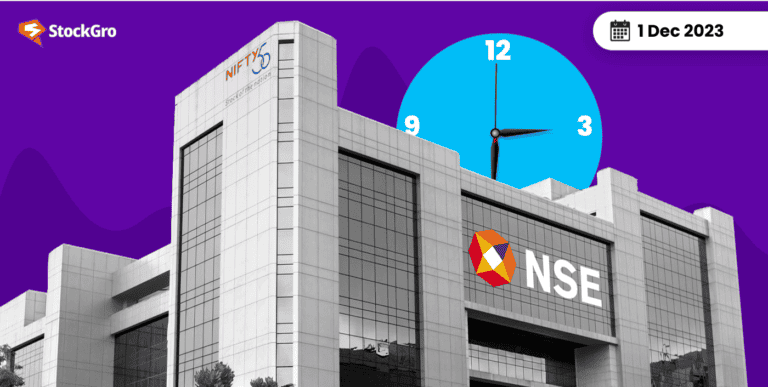
Currency risk affects every person or company that transacts in foreign currencies. The likelihood of encountering currency risk is higher for investors and companies with global assets or operations. It may continue to result in unforeseen losses or gains.
This type of risk is prevalent for investors and businesses with global operations or assets. Since there is a good probability of being the recipient of a currency transaction, currency risk must always be considered.
What is currency risk?
Currency risk refers to the possible financial losses caused by currency exchange fluctuations. It is also called exchange rate risk or foreign exchange risk. Exchange rate variations can influence the value of assets, obligations, and cash flows, which poses a risk to firms and individuals involved in foreign transactions.
Example: An investor in India holds bonds issued by a company in the United States. If the bond’s currency, i.e., the USD exchange rate, fluctuates against INR, it impacts the investor’s return on bonds.
Businesses and investors engaged in foreign commerce or investment must comprehend currency risk. Profitability may increase and possible losses may reduce with effective currency risk management. Companies may also create efficient plans to lessen the effects of exchange rate swings on their operations by having a thorough awareness of currency risk.
You may also like: Risk management in stock market
Understanding currency risk
There is a risk when a company transacts in a foreign currency or maintains financial records in a foreign currency instead of its home currency. It suggests the possibility of fluctuations in foreign currency rates affecting a company’s financial health and profitability. The volatility of the global currency markets is the cause of this risk, which emphasises the need for businesses to have efficient risk management strategies to lessen any possible detrimental effects on their financial health.
Example: Let’s say an Australian corporation operates a business in China, accepting payments in Chinese yuan and releasing its financial reports in AUD. The corporation is then exposed to foreign exchange risk.
Payments received in Chinese yuan must be translated to Australian dollars before being noted on the company’s financial statements. As implied by the term “foreign exchange risk,” the risk would be fluctuations in the exchange rate between the Chinese yuan, considered a foreign currency, and the AUD, considered a local currency.
Impact on the economy
Fluctuations in exchange rates impact small and medium-sized organisations, including those that solely function inside their domestic borders, in addition to global companies, major businesses, and businesses that engage in international commerce. It is long-term and results from the impact of unforeseen currency change on the cash flows of a business and market value.
Even if a business does not operate or sell internationally, unexpected exchange rate fluctuations can significantly influence its competitive position. For instance, even if a US furniture company only sells domestically, it would still have to compete with imports from Europe and Asia, which may become more affordable and viable if the dollar strengthens significantly.
Impact on financial markets
There is a clear correlation between the strength of the economy and currency rates. It implies that a more robust economy strengthens a nation’s currency and increases the likelihood that foreign investors will invest in that nation’s stock market.
Also Read: Hedging 101: Protect your investments from market surprises
What causes currency risk?
Exchange rate changes: The main factor causing currency risk is changing exchange rates. Numerous variables, like variations in interest rates, rates of inflation, and the pace of economic growth among nations, can cause these swings.
Political aspects: Currency risk may get influenced by political issues, including international relations, government policy changes, and political instability. These variables can also affect exchange rates.
Market sentiment: Exchange rates and currency risk may get influenced by market outlook. This is mainly influenced by things like one’s risk appetite, and predictions about future economic circumstances.
Financial metrics: The foreign currency market’s supply and demand of various currencies can be impacted by shifts in investor attitude and market expectations brought about by positive or negative economic data.
Types of currency risks
Companies and investors must practise competent management to limit losses, safeguard assets, and enhance profitability in a global market. Typically, three kinds of currency risk exist:
Transaction risk
Transaction risks occur due to fluctuating exchange rates during the beginning and end of cross-border transactions.
There is a possibility of the exchange rate changing before the completion of the transaction. The time lag between the transaction and settlement is one of the primary causes of transaction risk. To reduce transaction risk, you can use forward contracts and options.
Translation risk
Translating the financial statements of subsidiaries located abroad into the currency used for reporting by the parent business carries a risk termed translation risk or accounting risk. The translation risk increases when a business has a larger percentage of its debt, equity, or obligations in a foreign currency.
The stated values of assets, liabilities, and revenue might fluctuate due to exchange rate fluctuations, which may have an impact on the performance and financial status of a business.
Economic risk
Economic risk, sometimes referred to as forecast risk, is the possibility that an organisation’s market value may be impacted by its unavoidable exposure to fluctuations in exchange rates. Government rules and/or geopolitical instability are examples of macroeconomic variables that often produce this kind of risk.
This kind of risk relates to the possible effect that changes in exchange rates may have on a business’s ability to compete in the global market.
Also Read: Key risks in investing in the stock market
How to hedge currency risk?
Not simply people who trade on foreign currency markets are impacted. Unfavourable currency fluctuations frequently affect the gains in a portfolio with significant foreign exposure or reduce the gains in an otherwise successful international commercial endeavour.
Currency risk affects businesses that transact internationally when revenue collected overseas is translated to domestic currency and accounts payable are changed from local to foreign currency.
One way to mitigate that risk is to use the currency swap market. Currency swaps guarantee the reception of foreign funds, generate higher loan rates, and protect against the risk exposure connected with exchange rate fluctuations.
Through currency-hedged ETFs, many investors may lower their exposure to risk. By engaging in a currency swap, a portfolio manager who is required to buy foreign assets with a significant dividend component for an equity fund might protect themselves against exchange rate volatility.
Also read: https://www.stockgro.club/blogs/stock-market-101/what-is-hedging/
Bottomline
The knowledge of currency risk and currency risk management techniques is essential for investors. It is also beneficial for business owners to take precautions against economic exposure if they are aware of the possible effects.
Even while economic exposure is a risk that investors may not always be aware of, knowing which companies and stocks are most exposed to it may help them make smarter investing decisions when exchange rates are rising.

